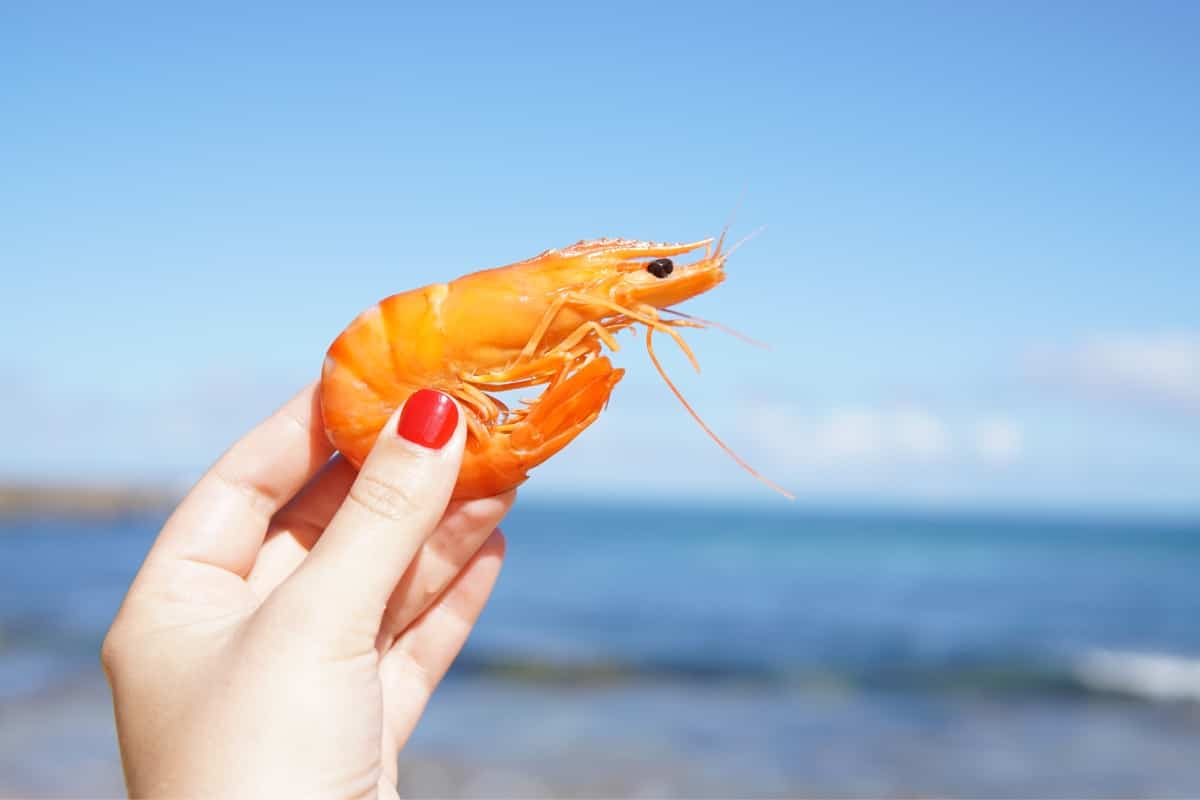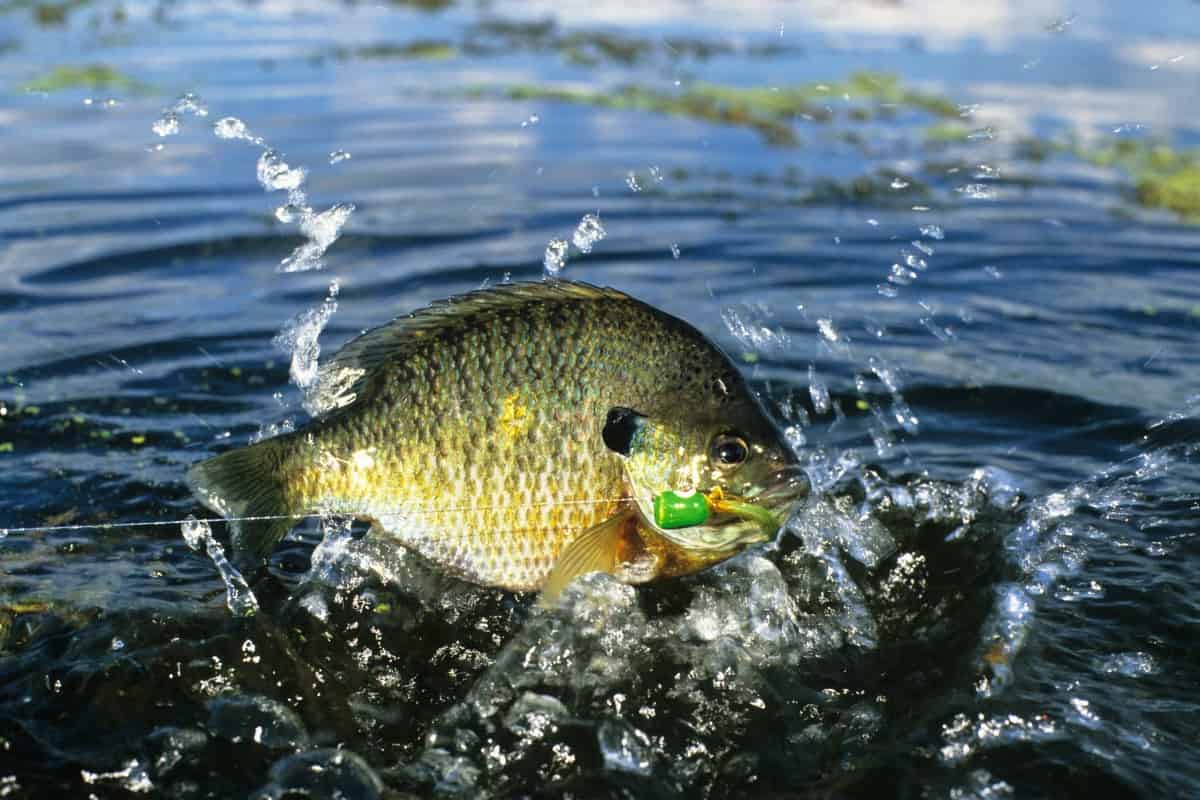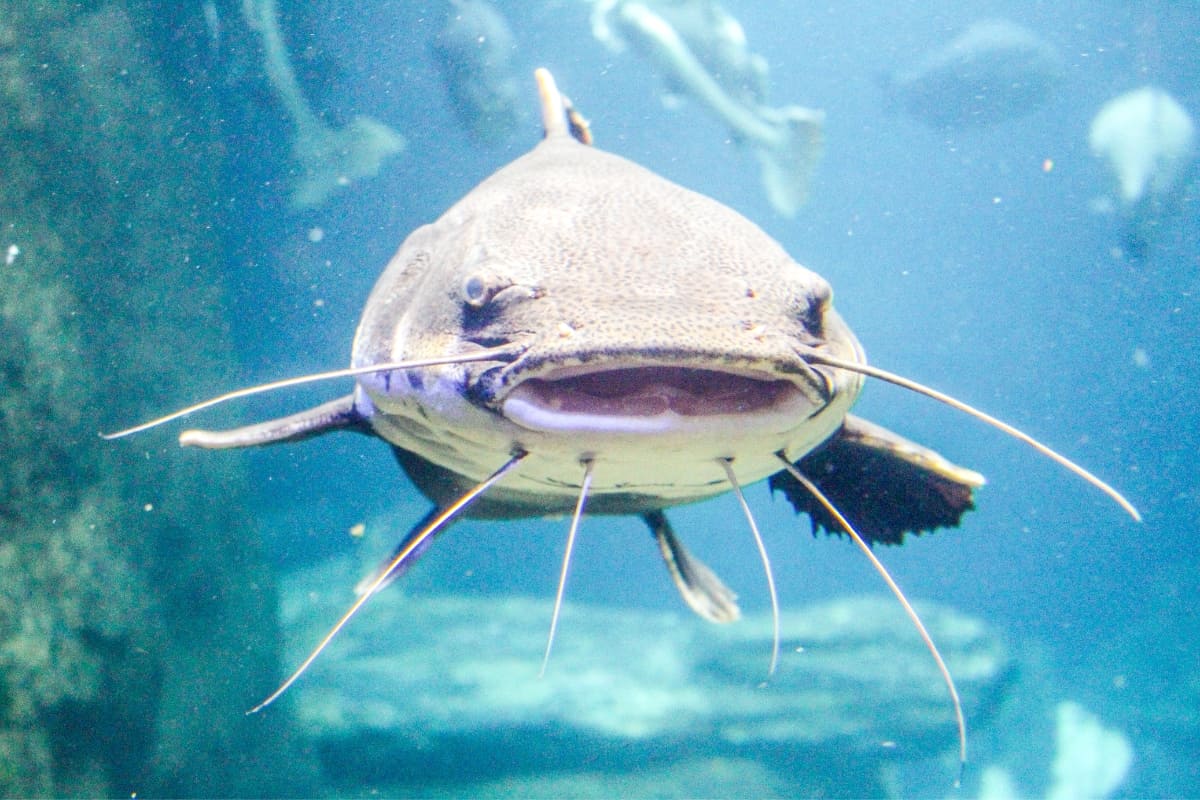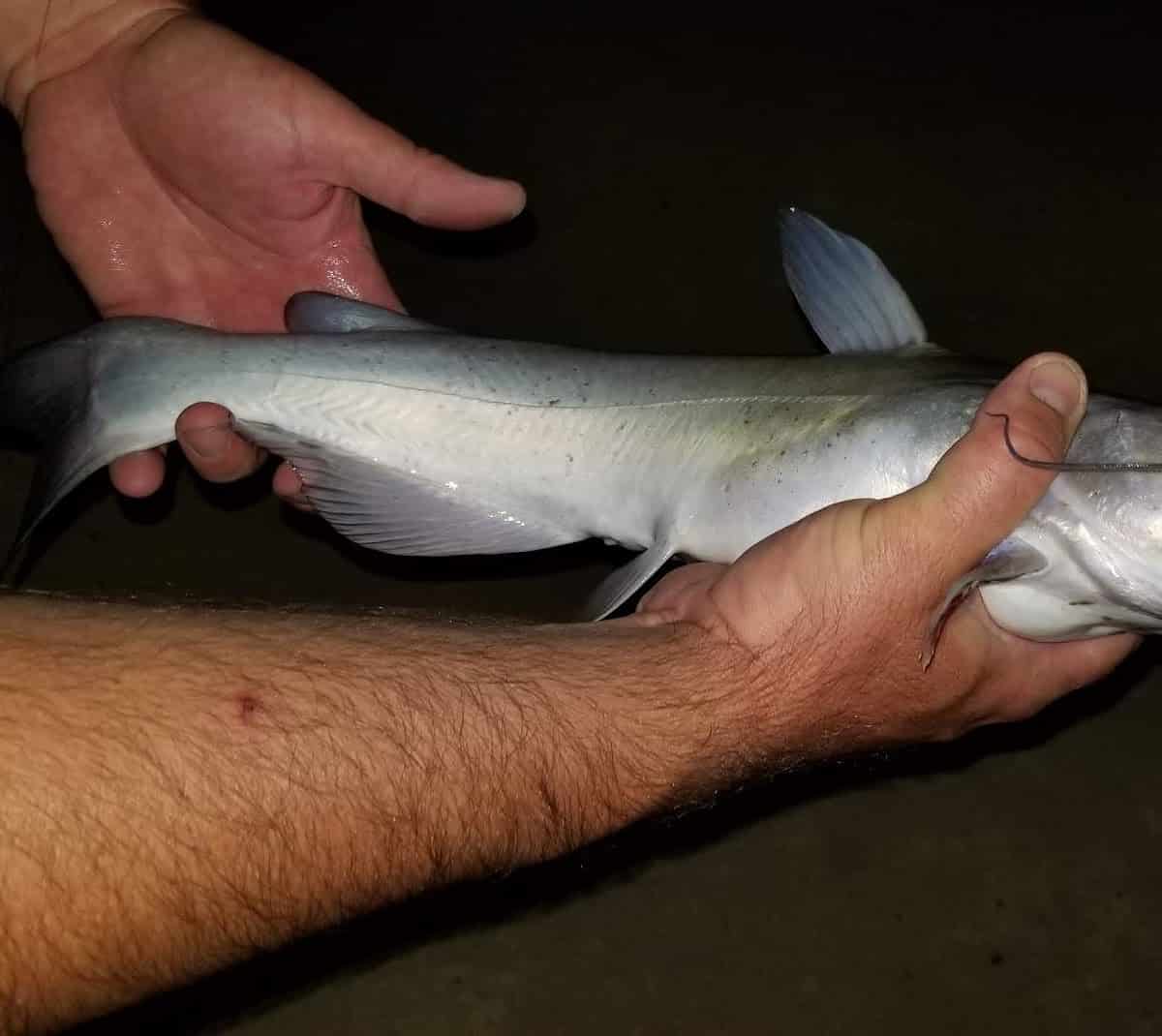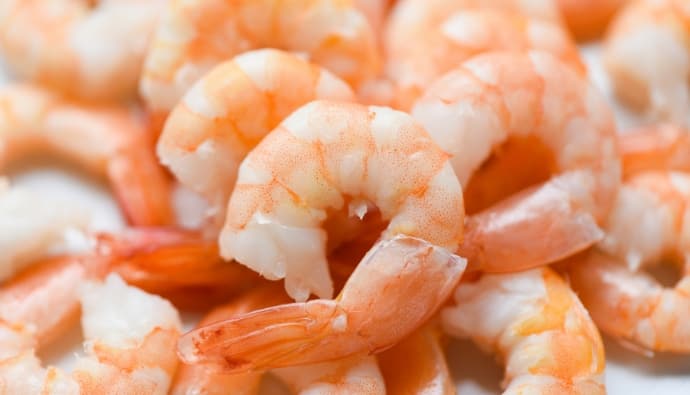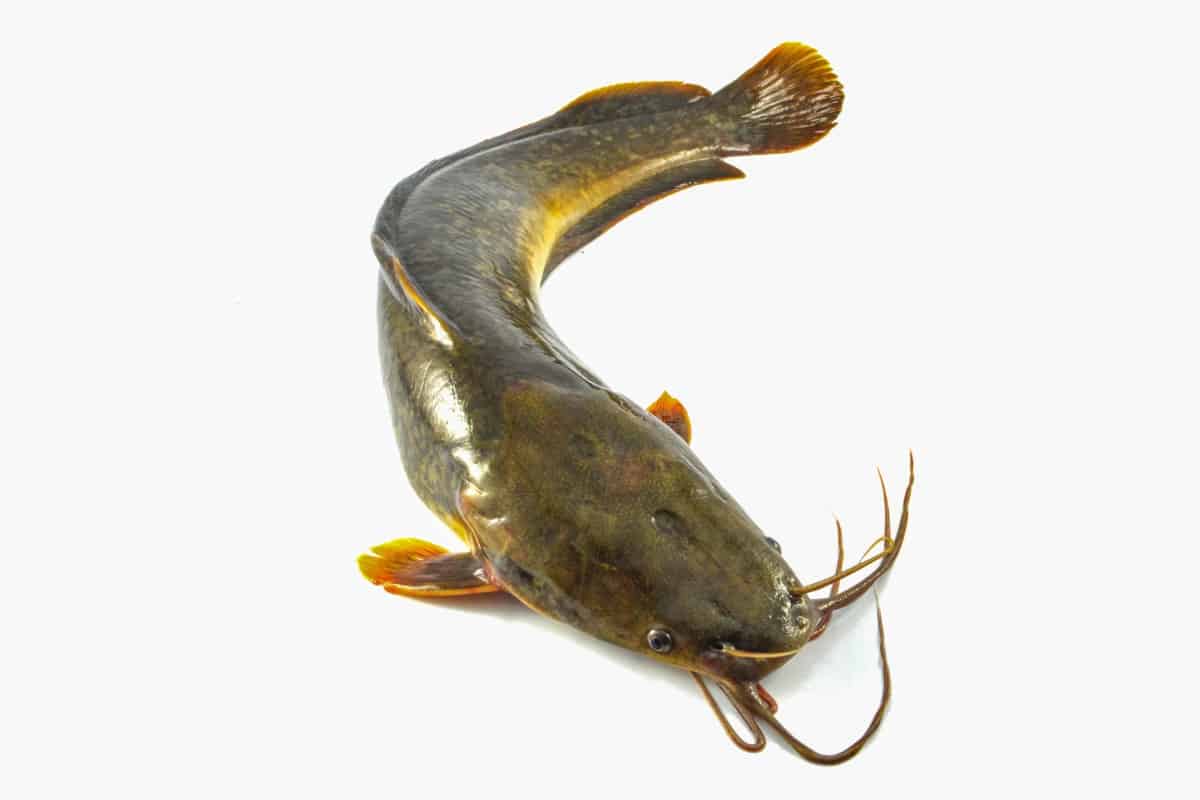Are you looking to catch catfish and wondering if shrimp makes good bait? We’ve tried a bunch of different baits with great success, but shrimp is one we hold high on our short list of options. This article shows why shrimp works well, choosing between fresh and frozen, and avoiding common mistakes.
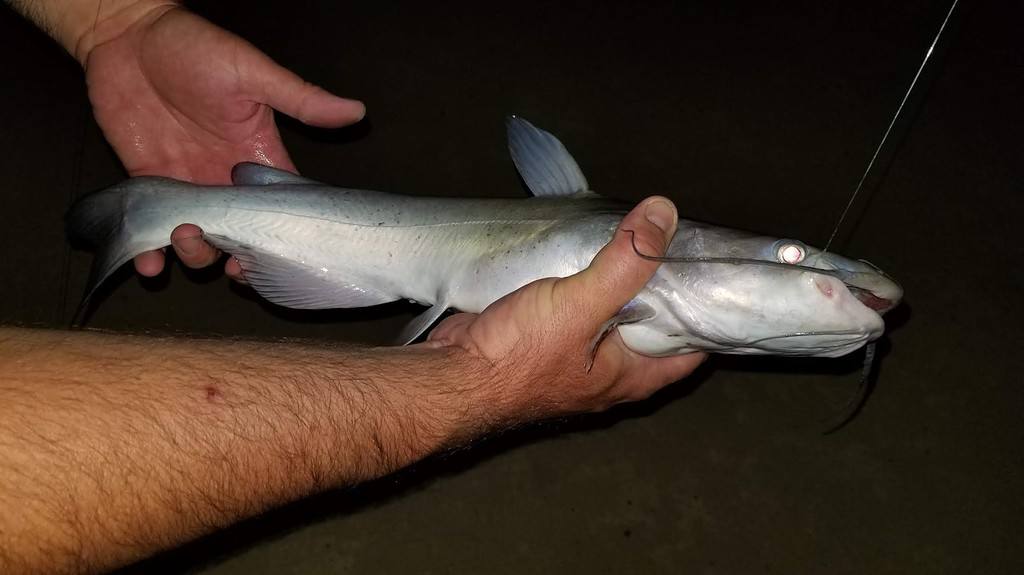
The Short Answer
Using shrimp as bait for catfish can be incredibly effective due to their sensory appeal and affordability. Catfish have a strong sense of smell and taste, and they find the scent and flavor of shrimp highly attractive. You can easily buy shrimp from grocery stores, seafood markets, or bait shops, making it a readily available and cost-effective choice.
The Long Answer
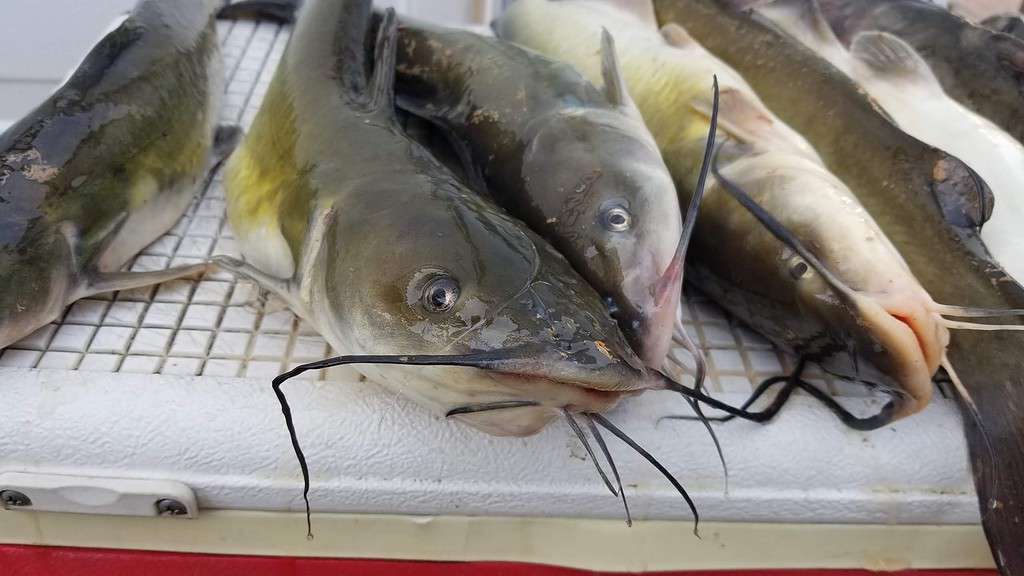
To prepare shrimp for bait, peel them and cut them into appropriate sizes based on the size of the catfish you’re targeting. Rig the shrimp onto your hook or float rig and cast your line. Experiment with different fishing techniques like bottom or drift fishing to see what works best in your area and for the specific catfish species you’re targeting.
Don’t believe it? Stick around, and we’ll tell you why shrimp make a fantastic choice as catfish bait, and how you can use them to up your catfish game. Get ready for some interesting insights, my fellow angler!
Remember, when it comes to fishing, especially for tricky catfish, the right fishing bait is everything. It’s like the secret sauce of your fishing adventure. So, let’s dive deep into the world of shrimp baits and see what makes them a catfish’s Achilles’ heel. Ready to go? Let’s dive right in!
Why Shrimp Works as Bait
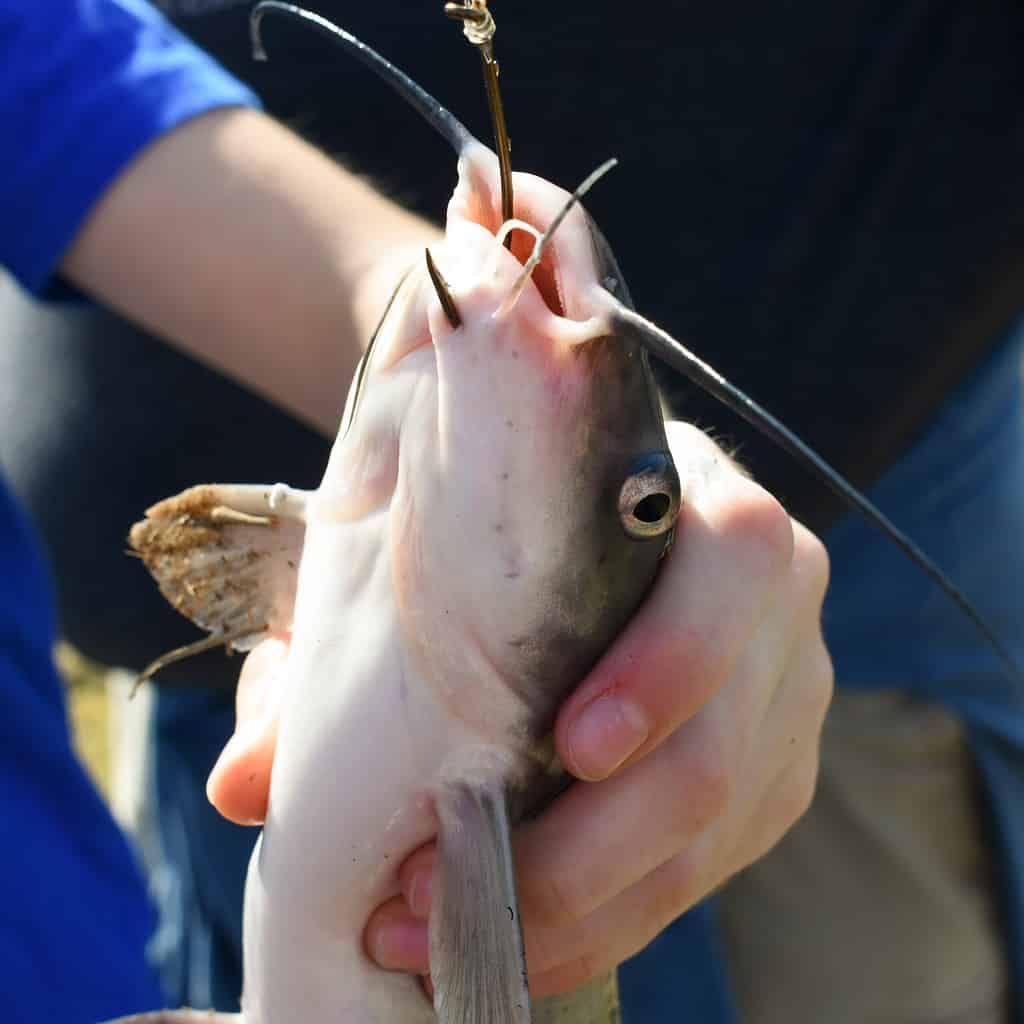
Have you ever wondered why some baits work better than others? It all comes down to the senses of our underwater buddies. Let’s see how shrimp tickles the catfish’s fancy, shall we?
Sensory Appeal of Shrimp
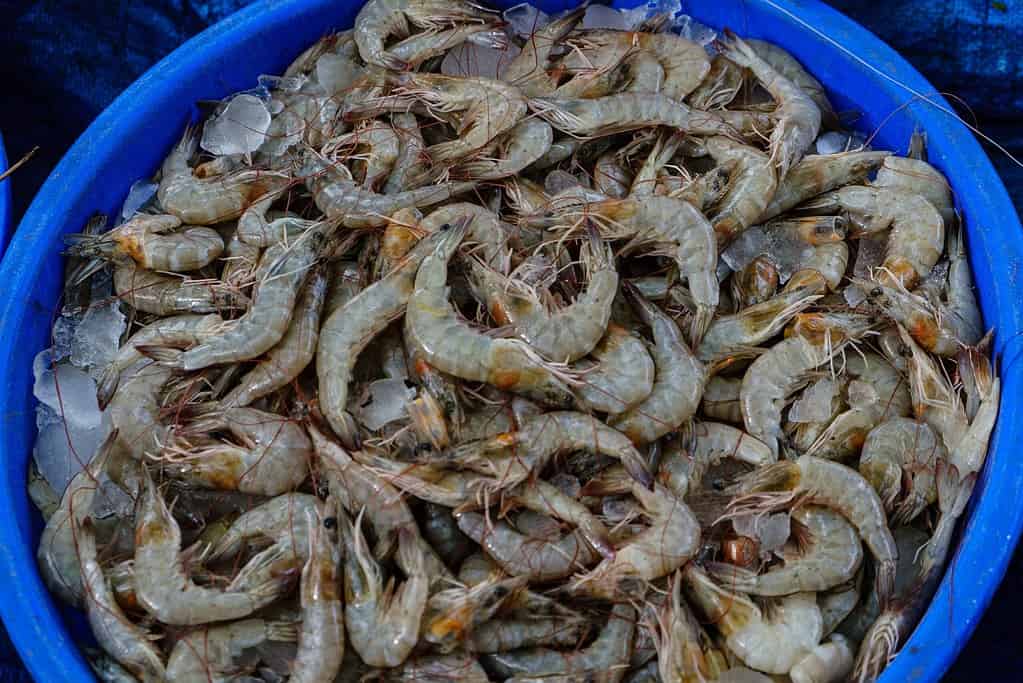
First up, you have to understand that the catfish species are not your average fish. They have an incredibly strong sense of smell and taste – like superheroes of the aquatic world. Fun fact, did you know a catfish’s body is basically a giant taste bud? Their sensitive barbels and even their skin can pick up tastes and smells in the water. Crazy, right?
Now, enter shrimp. Shrimp are like a sensory overload for catfish. Their distinct smell and flavor create a scent trail in the water that’s like a “come and get it” dinner bell for catfish. It’s like a whiff of fresh-baked cookies that lure you into the kitchen – catfish simply can’t resist the call of the shrimp.
Accessibility and Affordability of Shrimp
But the appeal of shrimp to use to catch catfish extends beyond just their sensory attraction to catfish. There’s another brilliant aspect about these crustaceans that makes them a top contender in your bait arsenal – their easy accessibility and wallet-friendly nature.
Whether it’s a grocery store around the corner, your local seafood market, or a well-stocked bait shop, shrimp are almost everywhere. So, even if you’re tight on budget or are in need of a bait option at a moment’s notice, shrimp proves to be a reliable companion.
You can use it as a cooked shrimp or fresh bait. Either work!
And let’s be honest. We don’t always have the luxury of time or the stomach for handling live baits or fiddling with elaborate lure setups. For those moments when you’re craving simplicity and efficacy, shrimp come riding in like a knight in shining armor. They’re just a simple yet powerful solution to reel in those elusive catfish. So, shrimp is more than just a bait. They’re a convenient, affordable, and effective fishing ally.
Preparing Shrimp for Catfish Bait
Alright, so we’ve established that shrimp is a bait to catch catfish. But wait, it’s not as simple as just tossing a shrimp into the water. There’s a bit of prep work to do first, but don’t worry – we’ve got you covered.
Selecting the Right Shrimp
Step one: Pick your shrimp.
Now, you might be wondering, “Should I use raw shrimp, thawed shrimp or frozen shrimp?” Well, both can work. Fresh shrimp, if available, is a terrific choice because, hey, who doesn’t love fresh bait, right? Catfish are no exception!
But if you can’t get your hands on fresh shrimp, frozen shrimp can do the trick as well. Just remember to thaw them out properly before using them as bait. And don’t worry about size too much. Both small and large shrimp can attract catfish. But if you’re after the big ones, using a bigger shrimp might just tip the scales in your favor.
Preparing the Shrimp
Okay, you’ve got your shrimp – now what? Here comes the fun part. Let’s get our hands dirty, shall we?
- Peeling: First off, peel off the shell. It’s a bit messy, but it makes the shrimp more appealing to the catfish. Remember, the smell is what attracts them, and removing the shell helps release more of that irresistible shrimp aroma.
- Cutting: Now, if you’re using larger shrimp, you might want to cut them into pieces. Small to medium catfish usually won’t bother with a shrimp that’s too big, so make sure your bait is bite-sized. Don’t discard the heads, though – they are like catfish magnets!
- Scenting (Optional): If you want to give your shrimp an extra appeal, consider adding some scent to it. There are various catfish attractants available in the market. But some of the most common ones used is adding garlic salt or Kool-Aid to the dead seafood shrimp or freshwater shrimp. Then let the shrimp marinade. This step is not mandatory, but it can be like adding a cherry on top of a sundae!
Rigging Shrimp for Catfish Bait
We’ve got our shrimp, we’ve prepped it up, and now it’s time for the main event – rigging. There’s a bit of an art to rigging shrimp for catfish bait, but with a few simple steps, you’ll be a pro in no time. Let’s get rigging, shall we?
Hook Rigging
First, we’ll talk about hook rigging, a classic way to present your shrimp to those elusive catfish. Here’s how you do it:
- Choose the Right Hook: A circle hook is a great choice for shrimp bait because it’s less likely to gut-hook the fish. Size-wise, anything between 2/0 and 5/0 should do the trick, depending on the size of your shrimp and the catfish you’re targeting.
- Thread the Shrimp: Now, for the actual rigging. Hold the shrimp by its tail, then push the hook through the tail end, going up towards the head. The idea is to have the hook come out near the shrimp’s head, leaving the point exposed for a good hook set. Remember, you want the shrimp to hang in a natural position.
And voila! Your shrimp is hooked and ready to charm the catfish.
Got a live shrimp? Here’s how to hook a live shrimp.
Float Rigging
Float rigging is another great way to present shrimp for catfish bait, especially if the catfish are hanging out in mid-water rather than at the bottom. Here’s a simple way to rig shrimp on a float:
- Get a Bobber: First off, you’ll need a fishing bobber. Any basic float or bobber will do.
- Attach the Bobber and Hook: Attach the bobber to your line, then tie your hook (again, a circle hook is a good choice) to the end of your line.
- Add the Shrimp: Thread the shrimp onto the hook the same way as before, starting at the tail and pushing the hook toward the head.
- Adjust Bobber Depth: Depending on how deep the catfish are, you’ll need to adjust the bobber to present the shrimp at the right depth.
Tips for Using Shrimp as Catfish Bait
So, you’re all set with your shrimp bait and rigging knowledge. But wait! There’s more to this catfishing game. Here are some tips and tricks to help you make the most out of your shrimp bait.
Let’s dive into the techniques that turn shrimp bait into a catfish magnet.
- Bottom Fishing: You see, shrimp baits are just the ticket for bottom fishing. Simply cast your line, let your baited hook sink to the bottom, and wait for a catfish to bite. They’re bottom dwellers, after all!
- Drift Fishing: This method involves casting your line and letting the current carry your bait through the water. It’s a great technique when catfish are scattered across a large area.
Remember, the key is patience. Catfish aren’t always the quickest to bite, so give it some time.
Optimal Conditions for Shrimp Bait
Just like any outdoor activity, fishing with shrimp bait can be influenced by various conditions. Let’s break them down:
- Time of Day: Catfish are more active during dawn and dusk. These are the best times to cast your shrimp bait.
- Weather: Always check the weather. Overcast and drizzly days is perfect for catfish fishing. The low light conditions make catfish more active and willing to bite.
- Water Conditions: Warmer, murky water can bring out the catfish. However, if you’re in clear water, don’t worry! Just make sure to cast your line near structures like fallen trees or rocky areas where catfish like to hide.
Comparing Shrimp with Other Catfish Baits
The world of catfish bait is varied and vast, just like the species themselves. From natural bait to commercial concoctions, there’s much to choose from.
So, how does our hero, the shrimp, compare with the others? Let’s put them side by side and see!
Shrimp vs. Other Natural Baits
Tons of fish species prefer natural baits. They’re easily available, affordable, and effective. Let’s see how shrimp stacks up against a few of them:
- Worms: These squiggly critters are a classic. Catfish love them, but so do a lot of other fish. If you’re specifically targeting catfish, shrimp often outperforms worms because it’s less likely to attract unwanted species.
- Cut Bait: Cut bait, often pieces of other fish, can be highly effective, especially for larger catfish. The fresh, oily scent can be a big draw. But shrimp holds its own here, too – it’s often easier to handle, less messy, and still has a strong, appealing scent.
- Chicken Liver: Ah, the old standby – chicken liver. It’s stinky, gooey, and catfish adore it. But it can be tough to keep on the hook. This is where shrimp shines – it’s easier to hook and less likely to be picked off by small fish or scavengers.
Shrimp vs. Commercial Baits
On the other hand, we’ve got commercial baits. These man-made options are designed to be irresistible to catfish, but how do they compare with shrimp?
- Dough Baits: Dough baits are widely available and come in various flavors. They’re easy to use and can be quite effective. However, just like chicken liver, it can be difficult to keep on the hook, especially in fast-moving water. Shrimp, being tougher, doesn’t have this problem.
- Dip Baits: Dip baits, or stink bait as they’re sometimes called, are a go-to for many catfish anglers. They’re super smelly and can be very attractive to catfish. However, they require a special rigging method (like a dip tube or a sponge). Shrimp is more straightforward to use – hook it and cast it out.
- Artificial Lures: These can be an option if you’re into sport fishing and like the challenge of enticing a catfish with a lure. However, they lack the natural scent and flavor of shrimp, which is a major factor in attracting catfish.
Final Thoughts
We’ve journeyed from the reasons shrimp make a fantastic choice – their sensory appeal, accessibility, and affordability – to the specifics of selecting, preparing, and rigging shrimp as bait. We’ve also shared some pro tips for when and where to cast your line for the best chances to catch catfish and compared shrimp to other natural and commercial baits.
As with all things fishing, the key is to experiment and find what works best for you and your target fish. Fishing is not just about the catch, but the thrill of the chase, the serenity of nature, and the joy of learning new skills. Using shrimp for catfish bait offers all this and more.
Don’t forget to share your shrimp bait adventures with us. We’d love to hear about your catches, your learning experiences, and the fun times you’ve had. After all, the fishing community is all about sharing knowledge, stories, and love for the sport. So let’s keep the conversation going!





 Facebook
Facebook YouTube
YouTube